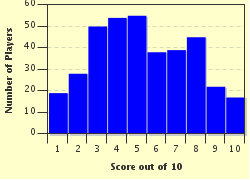Quiz Answer Key and Fun Facts
1. In the constellation of Serpens, this Messier object consists of noticeable features such as the Spire and the Pillars of Creation. What is it called?
2. Which constellation is sometimes referred to as the thirteenth sign of the zodiac?
3. In September 29, 2010, an unconfirmed extrasolar planet 20.5 light-years from Earth in the constellation of Libra was discovered. What was its name?
4. What is the theoretical boundary between the Sun's solar wind and the interstellar medium?
5. Which two co-ordinates are used to find a celestial object in the sky?
6. Out of these four stars, which one is the brightest (as seen from Earth)?
7. What is the term that defines the maximum mass of a white dwarf star, approximately equal to 1.38 solar masses?
8. What is the tight open cluster of stars located in the heart of the Orion Nebula named?
9. Launched in 2006, the New Horizons spacecraft was aimed to study what celestial object?
10. Which of these is classified by astronomers as the largest star (actual diameter)?
Source: Author
sirusrulz
This quiz was reviewed by FunTrivia editor
WesleyCrusher before going online.
Any errors found in FunTrivia content are routinely corrected through our feedback system.


